I am trying to understand why we can simply just calculate the usable energy that a battery has by multiplying the capacity and the nominal voltage.
Since the capacity (available electrical charge) in a battery depends on the drawn current (unlike in a capacitor), we can't actually know what energy is in the battery because we don't know the nominal current at which the capacity was set. So in order to really know how much energy we can get from a battery, we have to measure/calculate it for every possible load.
Here is my thinking and please correct me where i am wrong:
1
Most simple way of modeling a battery is with a simple internal resistance. Internal resistance does not affect the battery capacity because the charge is conserved. Constant current draw can be modeled by an ideal current source.
2
- With a current-source as a load, the current is independent of the voltage of the battery (at least when the battery operates in its operating voltage)
- Power drawn from the battery in this model does depend on the voltage.
- Available electrical charge at the certain current draw linearly falls with time.
3
For a LiOn battery, we usually see a graph like this - how the voltage depends on left-over capacity. This capacity does kinda relate to how much electrical charge is left in the battery in the form of ions, but it has mainly to do where we define the usefulness of the battery. We defined the charge/capacity to be 0 when the voltage falls to 3V and for it to be at e.g. 2000mAh, when the voltage is at 4.2V. In reality however, there is more charge in the battery if we further drain the battery under 3V or charge it above 4.2, but it's either unusable (voltage too low), unsafe or it damages the battery in some way.
4 My doubt about the meaning of the nominal voltage
The energy received can be calculated with integrating Voltage and Current through time OR with integrating the Voltage through electrical charge.
The energy is represented by the surface under this graph. Nominal voltage is defined to be at the point, where the surface can simply be calculated with a simple multiplication instead of integration.
